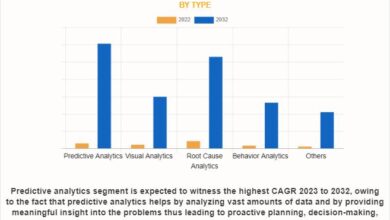Predictive Analytics for Software Maintenance: How It Works


Predictive analytics revolutionizes software maintenance by leveraging historical data, statistical algorithms, and machine learning techniques to foresee and mitigate future issues. This proactive approach allows organizations to optimize resource allocation, minimize downtime, and enhance overall software reliability. Let’s delve into how predictive analytics transforms software maintenance practices.
What is predictive analytics
Predictive analytics involves using historical data, statistical algorithms, and machine learning techniques to forecast future outcomes. By analyzing patterns and relationships within the data, predictive analytics identifies trends and makes predictions about future events or behaviors. It helps businesses and organizations make informed decisions, anticipate risks, optimize processes, and gain competitive advantages. Predictive analytics is widely used in various fields, including finance, marketing, healthcare, and manufacturing, to improve efficiency, reduce costs, and enhance decision-making capabilities.
Predictive analytics is used for software maintenance to anticipate and prevent potential issues before they occur. Major use cases include:
- Proactive Bug Fixing: Predictive analytics can be employed to analyze historical data on software bugs and defects. By identifying patterns and commonalities among past issues, the system can predict areas of code or specific modules prone to future bugs. Development teams can then proactively address these areas, reducing the occurrence of defects in new releases.
- Optimized Maintenance Scheduling: Predictive analytics can analyze past maintenance records, system performance metrics, and usage patterns to forecast when maintenance activities are likely to be needed. By predicting periods of low user activity or system downtime, maintenance tasks can be scheduled during optimal times, minimizing disruption to end-users and maximizing system availability.
- Resource Allocation and Capacity Planning: Predictive analytics can forecast future resource requirements based on historical data on software usage, system load, and performance trends. By predicting spikes in resource demand or identifying potential capacity bottlenecks, IT teams can allocate resources effectively, ensuring adequate infrastructure and manpower to support ongoing maintenance activities and user needs.
Software maintenance with predictive analytics: the process
Predictive analytics for software maintenance involves using historical data, statistical algorithms, machine learning techniques, and other analytical methods to predict future software issues, defects, or maintenance needs. Here’s how it generally works stage by stage:
- Data Collection: The first step involves gathering relevant data from various sources. This may include past maintenance records, defect reports, performance metrics, user feedback, code repositories, and more.
- Data Preprocessing: Once the data is collected, it needs to be cleaned and preprocessed. This involves tasks such as removing duplicates, handling missing values, and converting data into a format suitable for analysis.
- Feature Selection/Engineering: In this step, relevant features or variables that can influence software maintenance issues are identified. Sometimes, new features are created through feature engineering to improve the model’s predictive power.
- Model Selection: Various predictive modeling techniques can be used, such as regression analysis, decision trees, random forests, support vector machines, or neural networks. The choice of model depends on the nature of the data and the problem at hand.
- Model Training: The selected model is trained using historical data. During training, the model learns the patterns and relationships present in the data.
- Model Evaluation: After training, the model’s performance is evaluated using validation data or techniques like cross-validation. This step helps ensure that the model generalizes well to unseen data and performs accurately.
- Deployment: Once the model is trained and evaluated satisfactorily, it can be deployed into the software maintenance workflow. This may involve integrating it into existing systems or tools used for managing software maintenance.
- Prediction and Action: With the model in place, it can be used to make predictions about future maintenance needs or potential software issues. These predictions can then be used to take proactive actions such as preemptive bug fixes, resource allocation, or scheduling maintenance tasks.
- Monitoring and Feedback: Predictive analytics models need to be monitored regularly to ensure they continue to perform effectively. Feedback from the system users and ongoing evaluation of model performance help in refining and updating the model over time.
- Iterative Improvement: Predictive analytics for software maintenance is an iterative process. As new data becomes available and the system evolves, the model may need to be retrained or updated to maintain its accuracy and relevance.
Overall, predictive analytics can significantly improve the quality of software maintenance by allowing organizations to anticipate and address issues before they become critical problems.
Summing Up
Through the systematic analysis of historical data and the deployment of sophisticated predictive models, organizations can forecast maintenance needs, preemptively address software defects, and enhance the overall performance of their systems. As technology continues to evolve, embracing predictive analytics becomes increasingly indispensable for maintaining resilient and high-performing software ecosystems.



